

Articles
How To Store Raw Asparagus
Modified: January 7, 2024
Learn the best methods for storing raw asparagus to keep it fresh and flavorful. Explore our informative articles on preserving this delicious vegetable.
(Many of the links in this article redirect to a specific reviewed product. Your purchase of these products through affiliate links helps to generate commission for Storables.com, at no extra cost. Learn more)
Introduction
If you’re a fan of this delicious and versatile vegetable, you know that asparagus is best enjoyed when it’s fresh. However, there are times when you may have more asparagus than you can eat in one sitting. So, what do you do with the remaining asparagus to ensure it stays fresh and flavorful for as long as possible?
In this article, we will explore various methods for storing raw asparagus, whether in the refrigerator, in water, or by freezing it. We will also discuss the benefits and considerations of each method, so you can choose the option that works best for you and your culinary needs.
By properly storing your raw asparagus, you can prolong its shelf life, preserve its taste, and enjoy it in a variety of dishes throughout the year. So, let’s dive in and discover the secrets to storing raw asparagus!
Key Takeaways:
- Properly storing raw asparagus is crucial for preserving its freshness and flavor. Whether refrigerating, freezing, or storing in water, each method offers unique benefits for extending the shelf life of this versatile vegetable.
- When it comes to storing raw asparagus, choosing fresh spears, proper preparation, and regular checks for spoilage are essential. Whether in the refrigerator, freezer, or pantry, these storage methods ensure you can enjoy delicious asparagus year-round.
Read more: How To Store Cooked Asparagus
Choosing Fresh Asparagus
Before you even begin thinking about how to store your asparagus, it’s crucial to start with fresh, high-quality spears. Here are some tips for choosing the best asparagus:
- Look for firm, crisp spears: Fresh asparagus should be firm to the touch, with a vibrant green color and no signs of wilting or wrinkling. Avoid any spears that appear soft or mushy.
- Check the tips: The asparagus tips should be tightly closed and compact, without any signs of flowering or going to seed.
- Inspect the stalks: The stalks should be straight, with a smooth texture and minimal blemishes or discoloration.
- Consider the thickness: Thicker asparagus spears tend to be more tender and flavorful, while thinner spears can be more fibrous. Choose whatever thickness suits your preference.
Remember, the quality of your asparagus will directly affect its storage life, so always aim to purchase the freshest asparagus available.
Once you’ve selected your fresh asparagus, it’s time to prepare it for storage.
Preparing Asparagus for Storage
Properly preparing your asparagus for storage ensures that it stays fresh and flavorful for as long as possible. Follow these steps to prepare your asparagus:
- Trim the ends: Using a sharp knife or vegetable peeler, trim about an inch off the bottom of each asparagus spear. This removes any tough or woody parts that may affect the taste and texture.
- Rinse the asparagus: Rinse the asparagus thoroughly under cold running water to remove any dirt or debris. Gently pat dry with a clean kitchen towel or paper towels.
- Bundle or separate: Depending on your preferred storage method, you can either bundle the asparagus spears together with a rubber band or separate them into individual portions. Bundling is convenient for storing in the refrigerator, while separating is ideal for freezing or storing in water.
- Prep for blanching: If you plan to freeze your asparagus, blanching is recommended to help preserve its color, texture, and flavor. Fill a large pot with water and bring it to a boil. Prepare an ice bath in a separate bowl or sink by filling it with ice and water.
Now that you’ve prepared your asparagus, let’s explore the different storage methods you can use to keep it fresh and delicious.
Storing Asparagus in the Refrigerator
The refrigerator is a popular and convenient option for storing asparagus. Here’s how you can do it:
- Wrap in a damp paper towel: Take a damp paper towel and wrap it around the bottom ends of the asparagus spears. This helps to keep them hydrated and prevent them from drying out.
- Place in a plastic bag: Put the wrapped asparagus into a plastic bag, squeezing out as much air as possible before sealing it tight. Alternatively, you can use a resealable container or airtight storage bag.
- Store in the vegetable crisper drawer: The vegetable crisper drawer is the best location in your refrigerator to store asparagus. The cool and humid environment helps to maintain its freshness.
- Use within a few days: While storing asparagus in the refrigerator can extend its shelf life, it is still best to consume it within 3-4 days for optimal taste and quality.
Remember to check the asparagus periodically for any signs of spoilage. If you notice any sliminess, discoloration, or off smells, discard the spears as they may no longer be fresh.
Now, let’s explore another method of storing asparagus – in water.
Storing Asparagus in Water
Another way to store asparagus is by placing the spears in water. This method can help keep the asparagus hydrated and prolong its freshness. Here’s what you need to do:
- Trim the ends and rinse: Start by trimming about an inch off the bottom of each asparagus spear and rinsing them under cold water to remove any debris.
- Fill a container with water: Take a tall glass or jar and fill it with enough water to submerge the bottom ends of the asparagus. Alternatively, you can use a shallow dish or airtight container with a lid.
- Place the asparagus in the container: Stand the asparagus spears upright in the container, making sure the bottoms are submerged in the water. If needed, you can use a rubber band to secure the asparagus together for stability.
- Cover and store: Cover the container with plastic wrap or put the lid on if using an airtight container. Store the asparagus in the refrigerator, and change the water every two to three days to keep it fresh.
- Use within a week: While storing asparagus in water can help maintain its freshness, it is recommended to use it within a week for the best flavor and texture.
This method is particularly useful when you have a large quantity of asparagus or when you want to keep it hydrated while awaiting consumption.
Now that you know how to store asparagus in water, let’s move on to freezing asparagus for longer-term storage.
To store raw asparagus, trim the ends and place the stalks upright in a glass of water in the refrigerator. Cover the tops with a plastic bag to retain moisture. Change the water every few days to keep the asparagus fresh.
Read more: How To Store Asparagus
Freezing Asparagus
Freezing asparagus is a great option if you want to enjoy its delicious taste even when it’s out of season. Freezing helps to preserve the flavor, texture, and nutrients of asparagus. Here’s a step-by-step guide on how to freeze asparagus:
- Blanch the asparagus: Blanching is an essential step that helps to maintain the color and texture of asparagus. Start by bringing a large pot of water to a boil. While the water is boiling, prepare an ice bath by filling a bowl with cold water and ice cubes.
- Prep the asparagus: Trim the ends of the asparagus spears and rinse them under cold water. Cut them into desired lengths, taking into account the size of your freezer bags or containers.
- Blanch the asparagus: Boil the asparagus spears in the pot of boiling water for 2-3 minutes. This blanching process helps to deactivate enzymes that can cause nutrient loss and changes in flavor and texture.
- Transfer to ice bath: After blanching, quickly transfer the asparagus spears to the ice bath to cool them down and stop the cooking process. Let them sit in the ice bath for 2-3 minutes.
- Drain and dry: Remove the asparagus from the ice bath and drain them well. Pat them dry with a clean kitchen towel or paper towels to remove any excess moisture.
- Pack for freezing: Place the blanched and dried asparagus spears in airtight freezer bags or freezer-safe containers. Squeeze out any excess air and seal them tightly.
- Label and freeze: Label each bag or container with the date and contents. Place them in the freezer, ensuring they are stored in a flat position to prevent the spears from sticking together.
Frozen asparagus can last in the freezer for up to 8-12 months. However, for optimal flavor and quality, it is best to consume them within 6 months.
Now that you know how to freeze asparagus, let’s discuss the process of blanching in more detail.
Blanching Asparagus for Freezing
Blanching is an essential step in the process of freezing asparagus. It helps to preserve the color, texture, and nutrients of the spears. Here’s a detailed guide on how to blanch asparagus for freezing:
- Trim and rinse the asparagus: Start by trimming about an inch off the bottom of each asparagus spear and rinsing them under cold water to remove any dirt or debris.
- Boil a pot of water: Fill a large pot with water and bring it to a rolling boil. Make sure the pot is big enough to accommodate the asparagus spears without overcrowding.
- Add salt (optional): Adding salt to the boiling water can enhance the flavor of the asparagus. Use about 1-2 teaspoons of salt per quart of water.
- Prepare an ice bath: While the water is boiling, prepare a bowl or sink filled with cold water and ice cubes. This will be used to quickly cool down the asparagus after blanching.
- Blanch the asparagus: Carefully add the asparagus spears to the boiling water and let them cook for 2-3 minutes. The boiling time may vary slightly depending on the thickness of the spears, so keep a close eye on them.
- Transfer to ice bath: Using tongs or a slotted spoon, carefully remove the blanched asparagus spears from the boiling water and immediately transfer them to the ice bath. This stops the cooking process and helps to preserve their vibrant green color.
- Cool and drain: Allow the asparagus to sit in the ice bath for 2-3 minutes, or until they are completely cooled. Once cooled, remove them from the ice bath and drain them well.
- Dry thoroughly: Pat the asparagus spears dry with a clean kitchen towel or paper towels to remove any excess moisture. This will prevent ice crystals from forming during the freezing process.
- Pack for freezing: Place the blanched and dried asparagus spears in airtight freezer bags or containers. Squeeze out any excess air, seal them tightly, and label them with the date of freezing.
- Freeze: Place the packed asparagus in the freezer, ensuring they are stored in a flat position to prevent them from sticking together. They can be stored for up to 8-12 months.
By following these steps, you can preserve the taste and quality of asparagus while ensuring it remains fresh and ready to use even after months in the freezer.
Now that you have learned how to blanch asparagus for freezing, let’s explore another storage option – storing asparagus in the pantry.
Storing Asparagus in the Pantry
While refrigerating or freezing are the most common methods for storing asparagus, you can also store it in the pantry under certain conditions. Here’s how you can store asparagus in the pantry:
- Trim and rinse the asparagus: Start by trimming about an inch off the bottom of each asparagus spear and rinsing them under cold water to remove any dirt or debris.
- Wrap in a damp paper towel: Take a damp paper towel and wrap it around the bottom ends of the asparagus spears. This helps to keep them hydrated and prevent them from drying out.
- Place in a perforated plastic bag: Put the wrapped asparagus spears into a perforated plastic bag or a produce bag with small holes. This allows for airflow and prevents moisture buildup that can lead to spoilage.
- Store in a cool, dark place: Find a cool spot in your pantry away from direct sunlight and heat sources. A temperature between 40-50°F (4-10°C) is ideal for keeping asparagus fresh.
- Check regularly: Asparagus stored in the pantry has a shorter shelf life compared to refrigerated or frozen asparagus. Check the spears regularly for any signs of spoilage, such as sliminess or mold, and use them within a few days.
This method works best when your pantry conditions meet the recommended temperature range, and you plan to use the asparagus within a short period.
Now, let’s explore another method of storing asparagus – in freezer bags.
Storing Asparagus in Freezer Bags
One of the most convenient ways to store asparagus in the freezer is by using freezer bags. This method allows you to easily portion and access the asparagus as needed. Here’s how you can store asparagus in freezer bags:
- Trim and rinse the asparagus: Start by trimming about an inch off the bottom of each asparagus spear and rinsing them under cold water to remove any dirt or debris.
- Cut into desired lengths: Cut the asparagus into lengths that will fit comfortably inside the freezer bags. Typically, 1-2 inch lengths work well, but you can adjust based on your preference and intended use.
- Blanch the asparagus (optional): Blanching the asparagus before freezing can help to maintain its texture and color. Follow the blanching method mentioned earlier in the article, if desired.
- Allow the asparagus to cool: Whether you blanched the asparagus or not, let it cool down completely before proceeding to the next step. This helps to prevent condensation inside the freezer bags.
- Packing the freezer bags: Place the cooled asparagus spears into freezer bags. Try to arrange them in a single layer without overcrowding, to ensure they freeze evenly and avoid clumping together.
- Remove excess air: Squeeze out as much air as possible from the freezer bags before sealing them tightly. This prevents freezer burn and keeps the asparagus fresh for longer.
- Label and date the bags: Use a permanent marker to label each bag with the contents and the date of freezing. This helps you keep track of their freshness and allows for easier organization in the freezer.
- Store in the freezer: Place the labeled freezer bags in the freezer, keeping them in a flat position to prevent the asparagus from getting crushed or misshapen. They should be stored away from items that may cause damage or flavor transfer.
By storing asparagus in freezer bags, you can easily access the desired quantity whenever you need it for your recipes. Properly packaged and labeled, frozen asparagus can stay fresh for up to 8-12 months.
Now that you know how to store asparagus in freezer bags, let’s summarize the main takeaways.
Read more: How To Store Asparagus At Home
Conclusion
Properly storing raw asparagus is essential for preserving its freshness, flavor, and nutrients. Whether you choose to store it in the refrigerator, in water, or by freezing it, each method has its own benefits and considerations.
When storing asparagus in the refrigerator, remember to wrap the spears in a damp paper towel and place them in a plastic bag in the vegetable crisper drawer. This method allows the asparagus to stay hydrated, maintaining its crispness and flavor for a few days.
Storing asparagus in water can be a great option when you have an abundance of spears. Submerging the bottom ends in water helps to keep them hydrated, and regular changes of water can extend the freshness for up to a week.
If you want to enjoy asparagus during off-season months, freezing is the way to go. Blanching the asparagus before freezing helps to maintain its color and texture. Store the blanched spears in freezer bags, ensuring to remove excess air, and label them with the date of freezing for easy organization in the freezer. Frozen asparagus can be enjoyed for up to 8-12 months.
For those who prefer a pantry storage option, wrap the trimmed asparagus spears in a damp paper towel, place them in a perforated plastic bag, and store them in a cool and dark spot in the pantry. However, keep in mind that the shelf life will be shorter compared to refrigerated or frozen asparagus.
Remember to always choose fresh asparagus, trim, and prepare it before storage. Regularly check for any signs of spoilage and discard any spears that show sliminess, discoloration, or off smells.
By following these storage methods, you can enjoy the delicious taste of asparagus throughout the year, adding its unique flavor and nutritional benefits to your dishes.
So, the next time you find yourself with an excess of asparagus, don’t let it go to waste. Use these storage techniques to preserve its freshness and enjoy the vibrant taste of this wonderful vegetable whenever you please.
Frequently Asked Questions about How To Store Raw Asparagus
Was this page helpful?
At Storables.com, we guarantee accurate and reliable information. Our content, validated by Expert Board Contributors, is crafted following stringent Editorial Policies. We're committed to providing you with well-researched, expert-backed insights for all your informational needs.


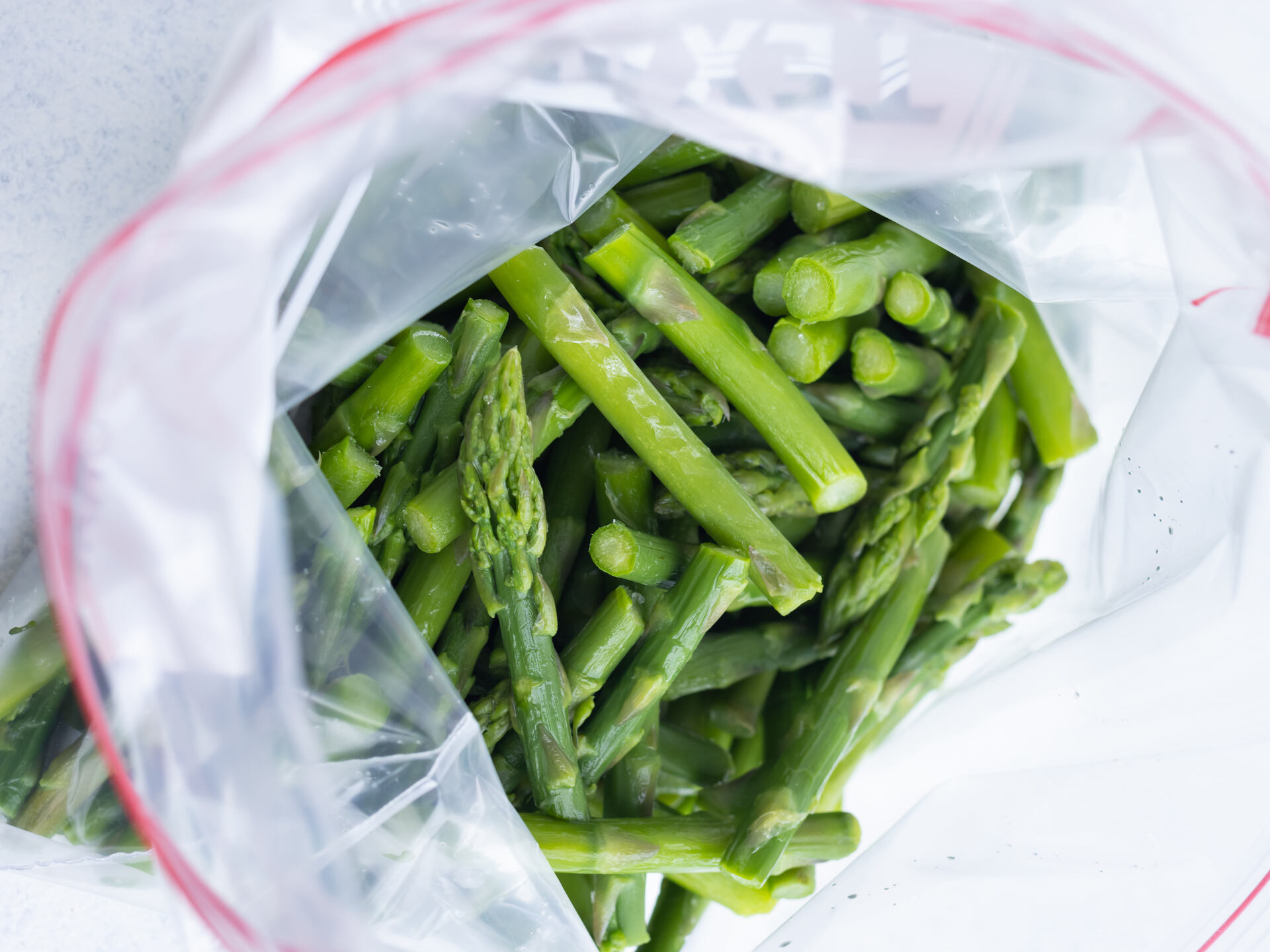

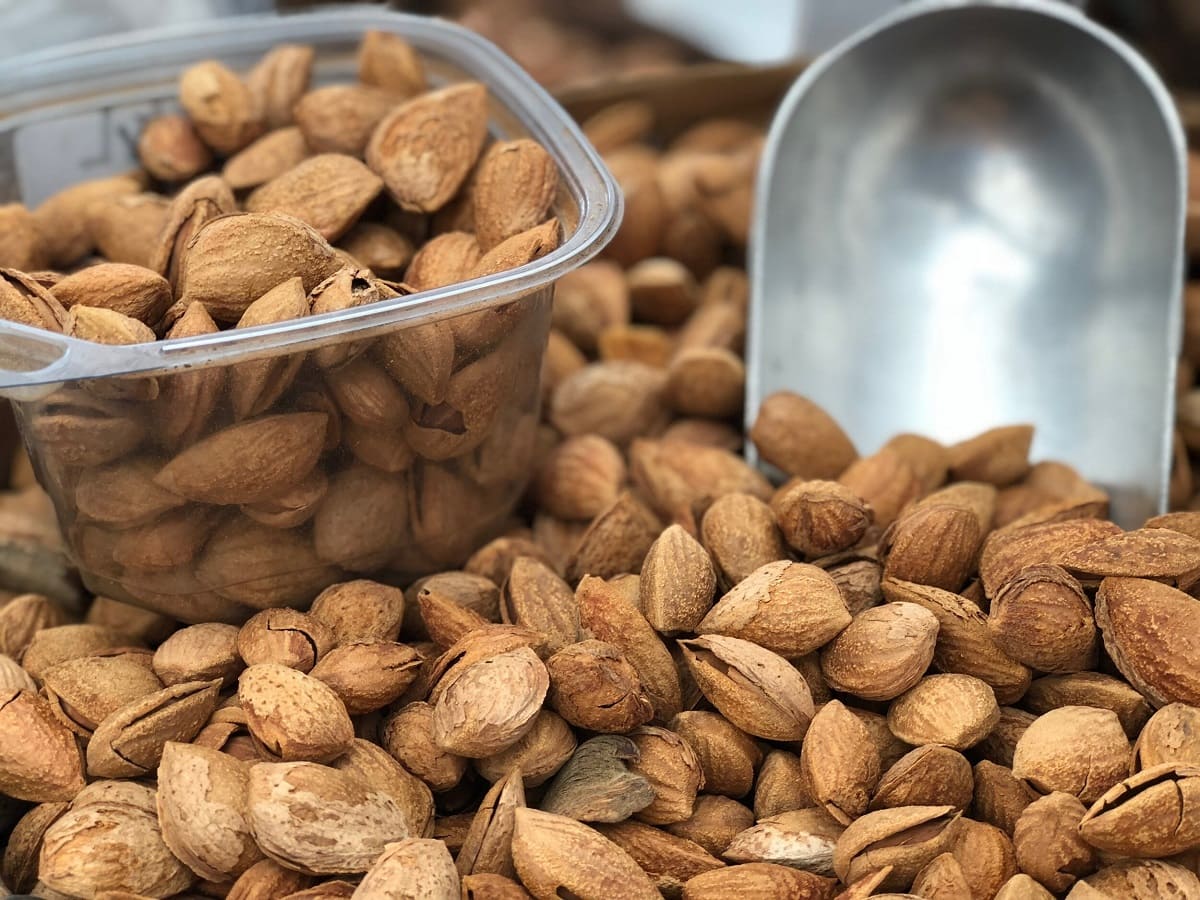

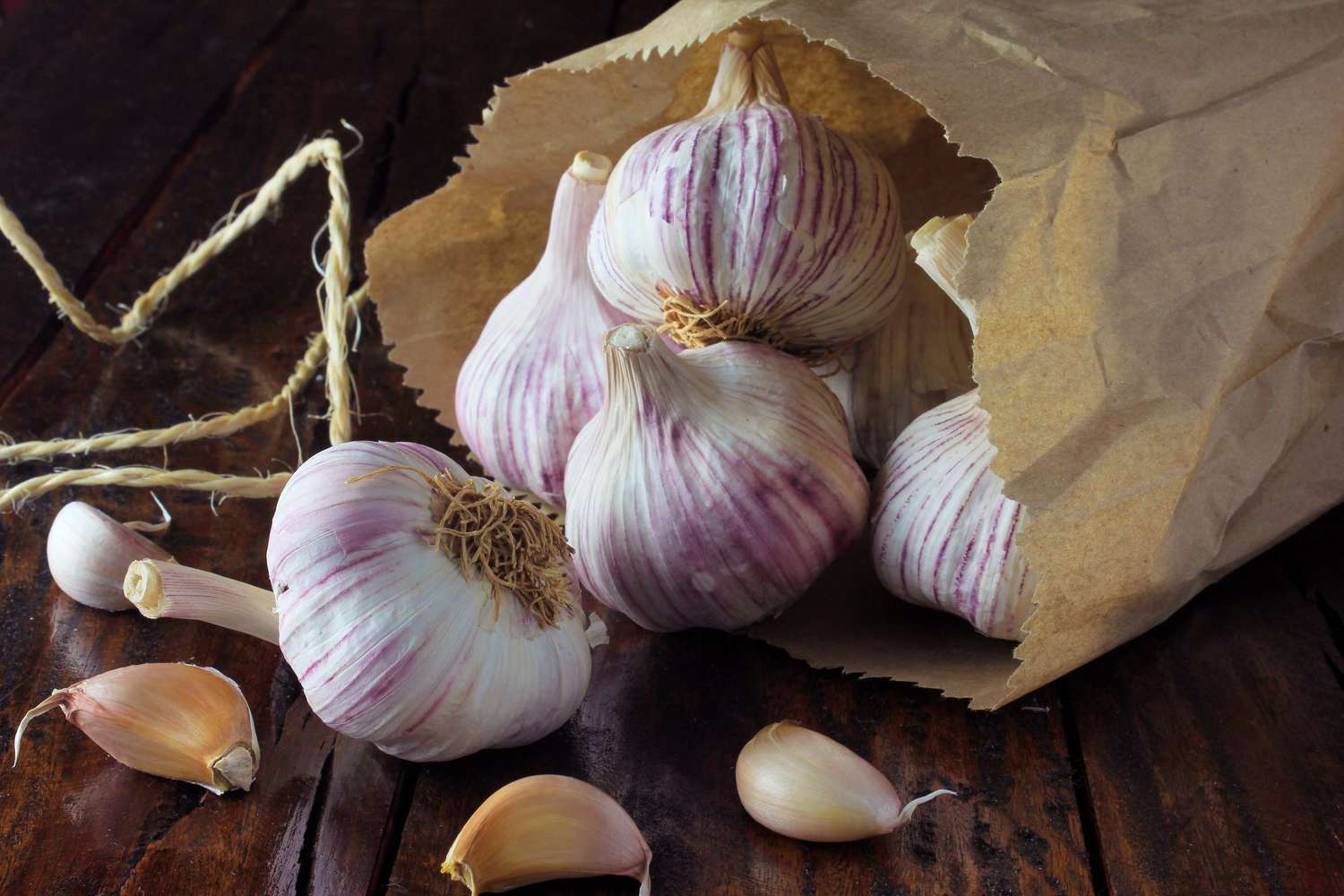
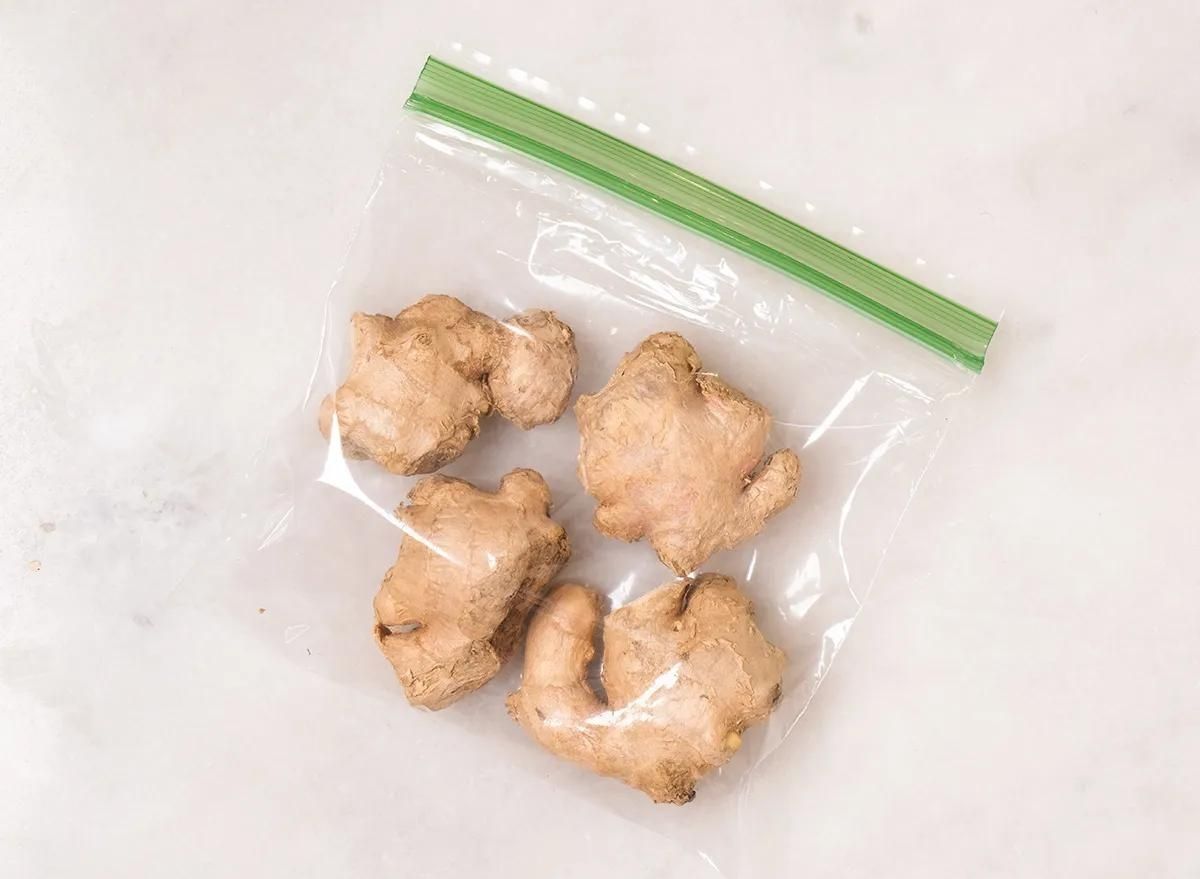
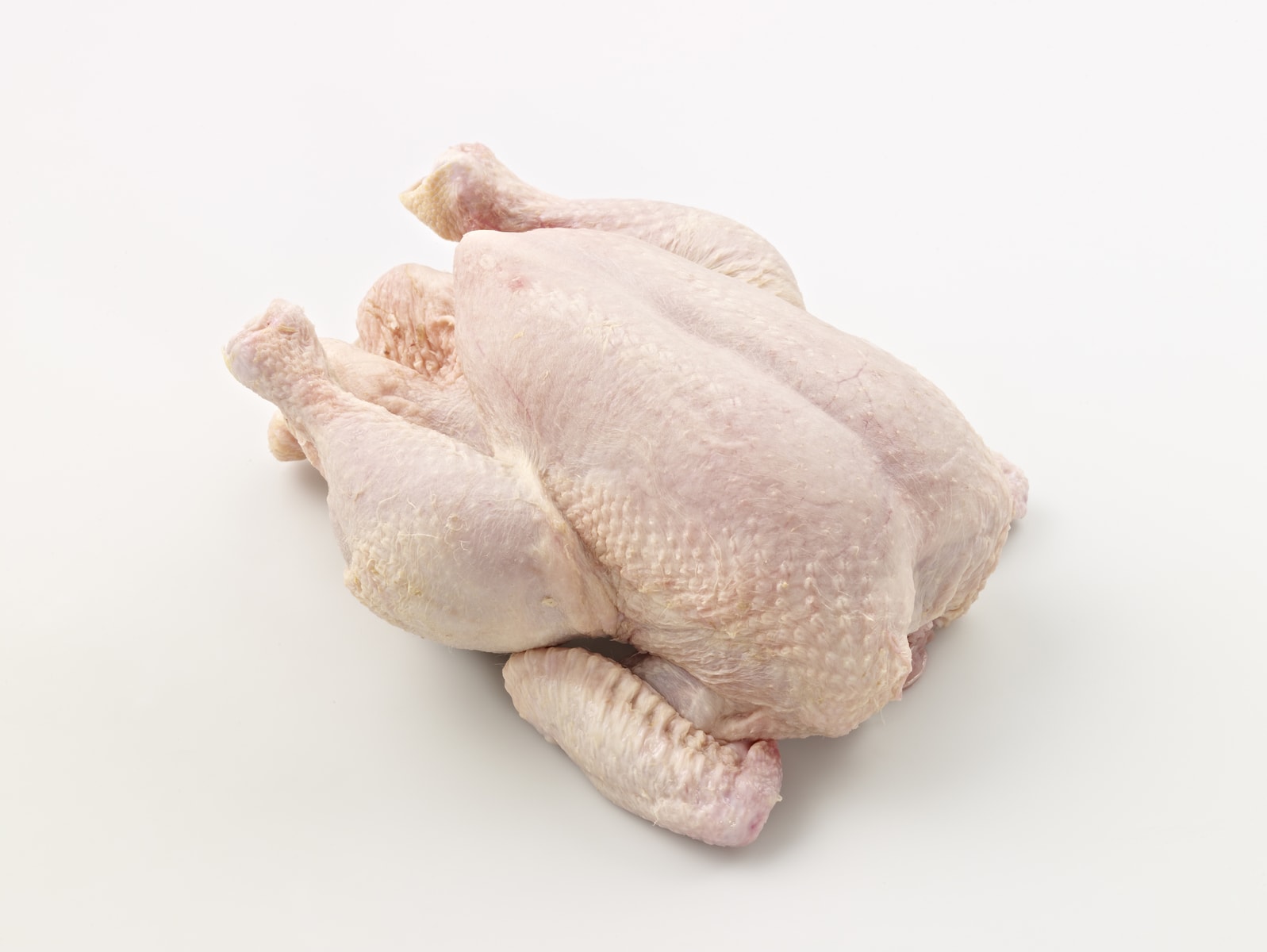

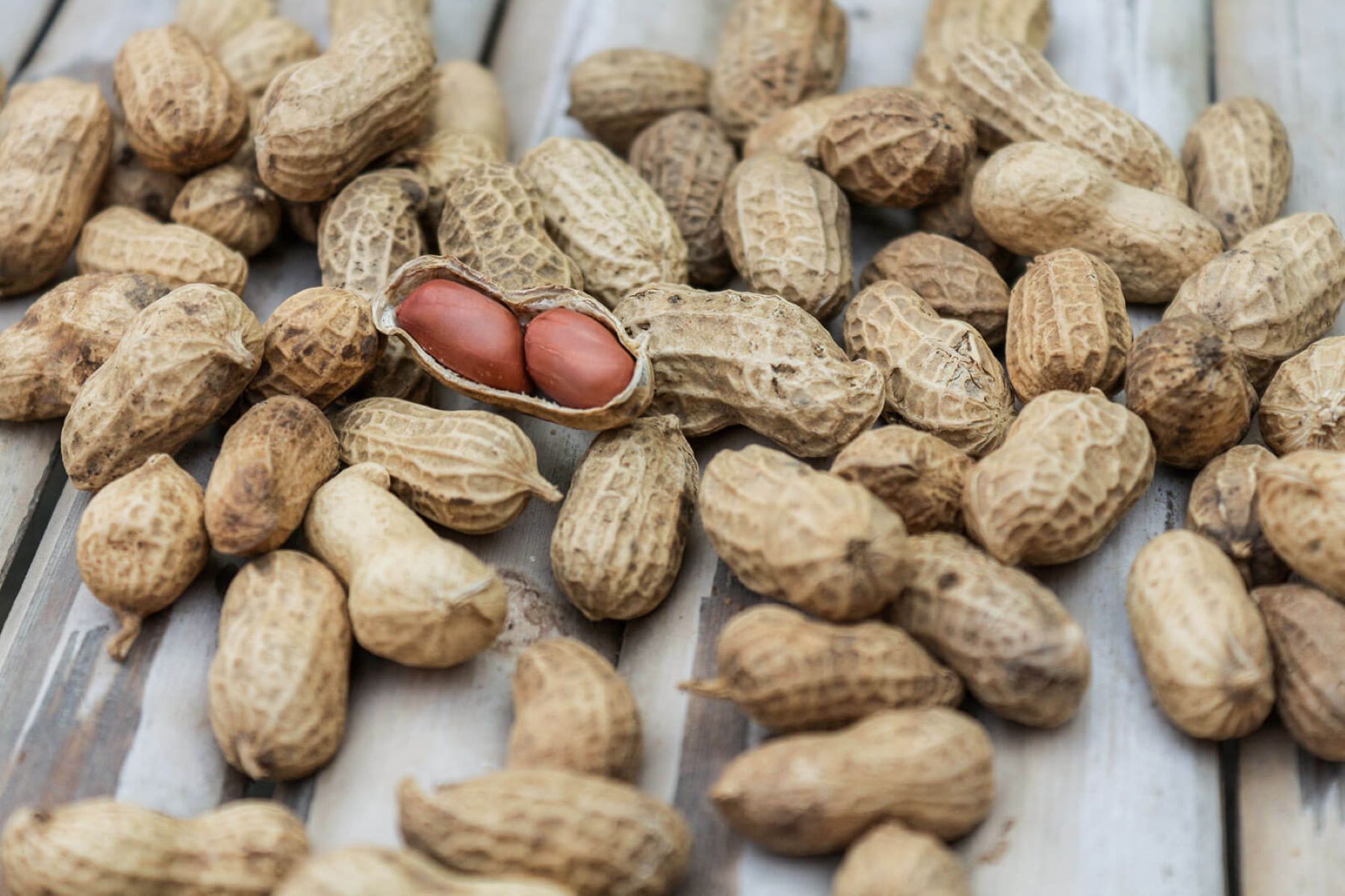
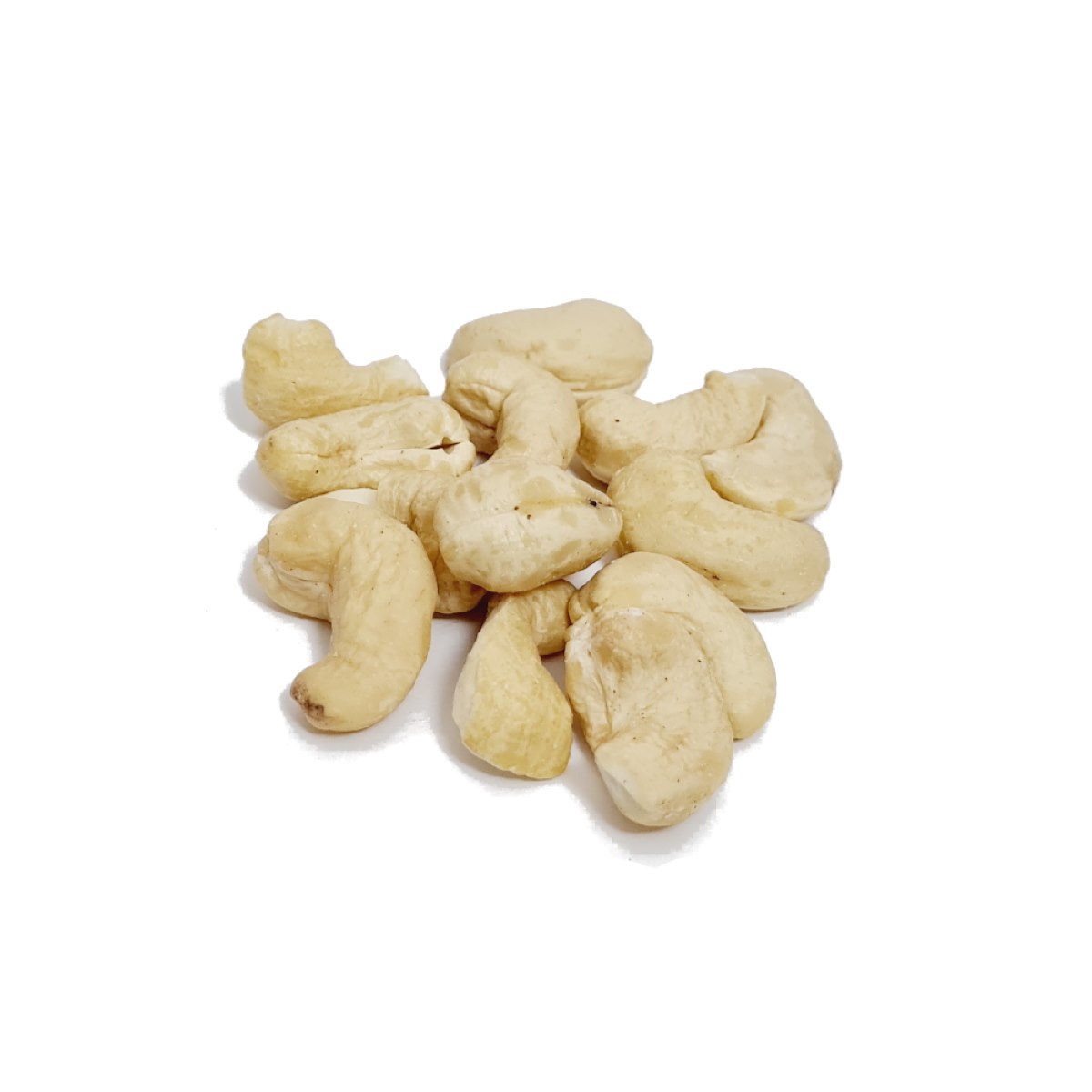


0 thoughts on “How To Store Raw Asparagus”